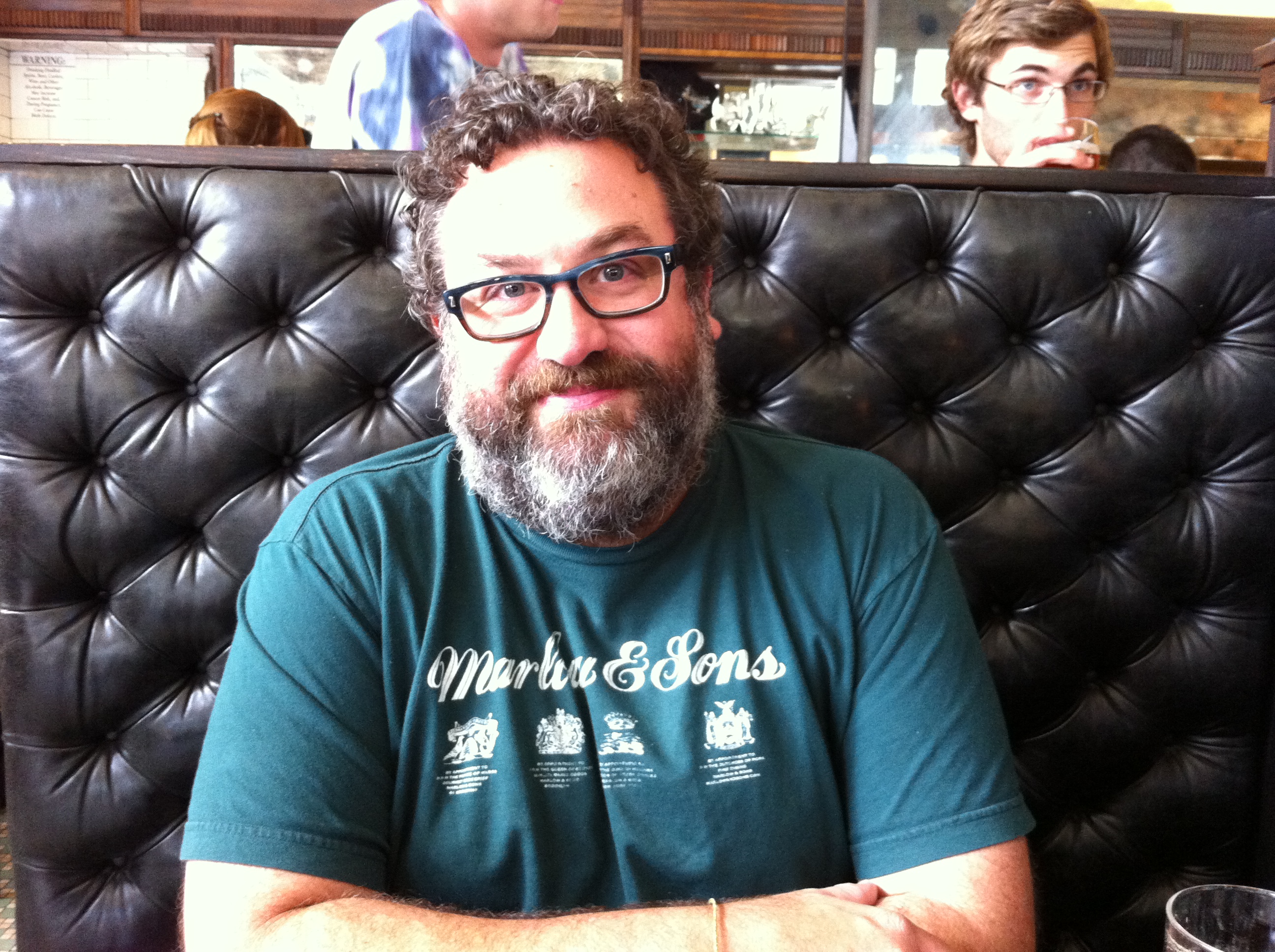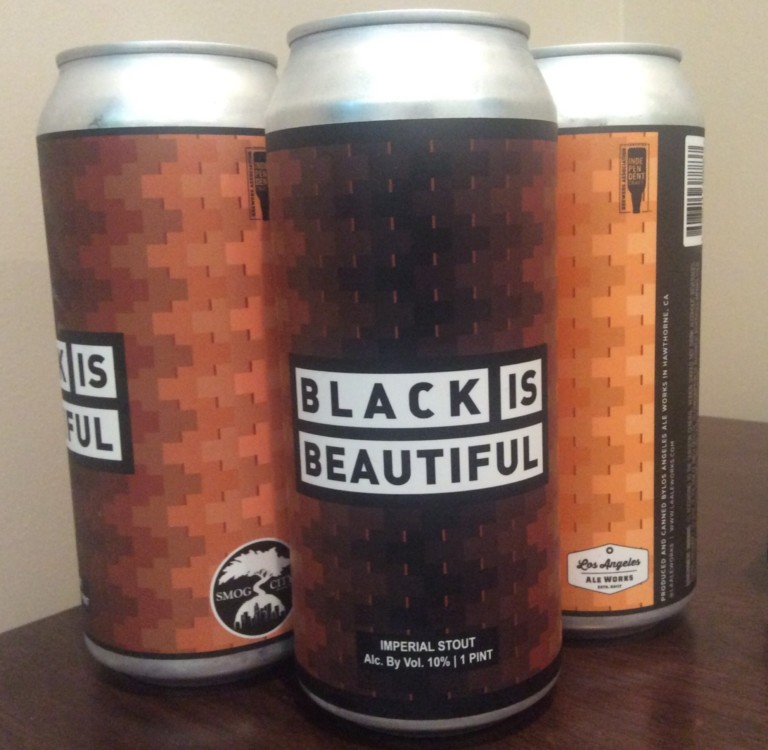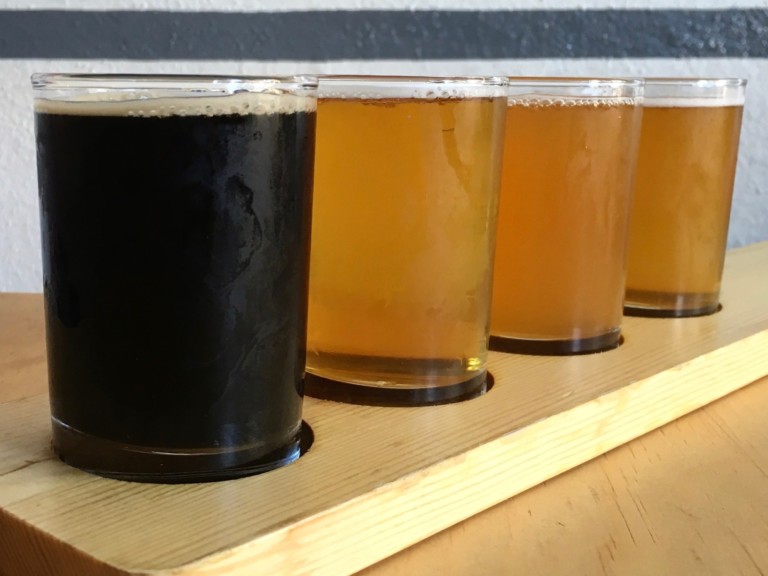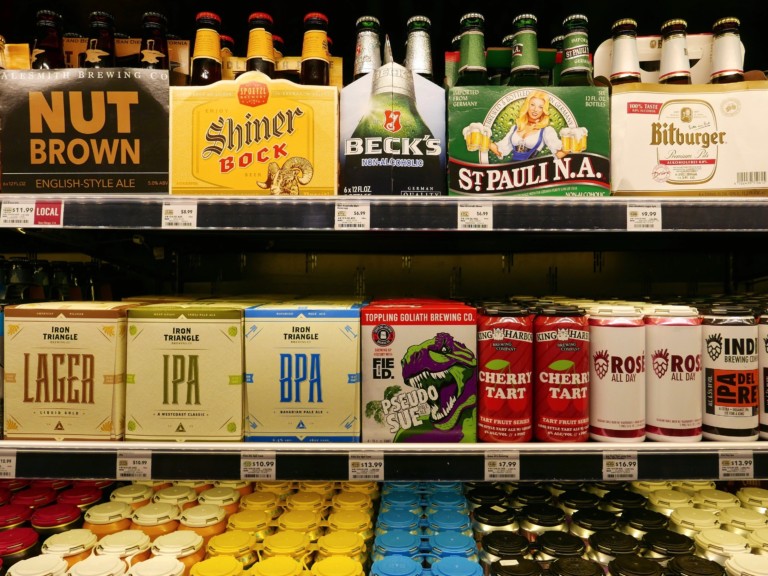Dave McLean first started drinking craft beer more than two decades ago, while the Pittsburgh native was still in Boston. After he moved across the country to San Francisco, he started brewing himself, and he eventually took his interest to the next level, attending UC Davis Master Brewers Program and studying under famed professor Michael Lewis. He opened Magnolia Pub & Brewery in 1997, followed up with The Alembic Bar down Haight Street, and is currently working to open a brewery in the Dogpatch neighborhood. On August 5, we met for cask-conditioned ale at Magnolia, and McLean better explained his background, approach and vision for the future.
What initially inspired your interest in beer?
I got into craft beer about 22 years ago. I was in college and the craft beer scene was just beginning to explode on the East Coast. I’m was in Boston. Some things were even coming from out here too, even back then. The early arrivals made their way east: Sierra Nevada, North Coast. I remember Red Seal Ale being one of the first California craft beers I tried, 20 plus years ago. Sierra Pale. I just felt like I happened across it at the right time. There were some really interesting things starting to emerge. Exposure to all the different flavor possibilities that were going on was really attractive. It drew me in. I visited a couple brewpubs in Boston that opened about the time I was there.
Which ones?
A really inspirational one for me is long gone. It was Commonwealth Brewing Company in the North End, kind of across the street from Boston Garden, from the old Garden. They specialized in English style beers. They had a lot of cask beers. That was the first place I ever had a cask-conditioned beer. They didn’t start together with Manhattan Brewing Company, but I think there was some kind of purchase or takeover. They ended up being part of the same company with Manhattan Brewing Company, which also had a pretty strong cask program. Maybe that came after they joined forces. Garrett Oliver brewed there before he went to Brooklyn. I remember seeing him in the brewery there about 20 years ago. Those two places, one in Boston, one in New York, were probably the two earliest places I was exposed to cask beer and English style beer. That continued to inspire me.
What was the very first beer that you brewed, and how did that turn out?
You probably hear it all the time, but not very good. It was a West Coast pale ale. I moved out here right out of college. I didn’t do any homebrewing on the East Coast. I kind of moved out here, dove a little deeper into discovering the local craft beer scene, and found a homebrew shop in town that has since closed. But there’s another one that’s still around. But the one I went to, I walked in and said I like Red Tail pale ale, I like Red Seal, I like Sierra Pale, help me make something like that. I was 21, I guess. At the time, I definitely developed a taste for craft beer, but didn’t have any clue about the ingredients or how to make it, so I just leaned on the advice of the homebrew shop and made something kind of sort of along the lines of Red Tail.
Stylistically, is it because of your experiences in Boston and at Commonwealth that you went English style with your brewing?
That triggered my curiosity and landed right in my wheelhouse of what I liked flavor wise and liked to drink. That was just the beginning. I got more and more into that style of beer and would sort of seek out cask beer when I heard of a place that did a nice job with it. I went to UC Davis and went through their Master Brewers program and pretty much came out of that and went into a pretty inspirational two or three week trip to England and really just went on a crazy adventure of trying to hit as many great English breweries as I could, and fell on the whole English pub model, with the English pub being a social institution, the living room of the community, and the ones that really care for their beer…they sucked me in. I fell in love with that approach, that brewing aesthetic, the idea of session beers, packing a lot of flavor into a smaller package, and having a beer that becomes the sort of social lubricant for the night and isn’t necessarily just try one…
…which finally seems to be catching on around the country, session beers.
I’ve been watching and been in and around craft beer for 20+ years now and it all makes so much sense to me when I think about it over the long haul. We, as a modern brewing country, everything’s kind of a product of brewing, homebrewing, craft brewing. Where did it start? What was the jumping off point that begat the whole kind of industry and culture in this country? So much of it was a reaction to the sameness and kind of boringness of a lot of mass produced lagers and pilsners through the Prohibition era. Everybody kind of became like a kid in a candy store, brewing and drinking too. How far from that thin, insipid, light, mass-produced lager can you take it? Where can you go with it? What kind of envelopes can you push? What kind of directions can you go in and so it’s almost like an adolescence of craft brewing that we’ve been going through for the last 20+ years. Everybody’s sort of trying out every possible avenue and every extreme direction you can go in with ingredients, bigger and bigger beers, but at some point…
…in general, or just in San Francisco, or both?
I think it’s around the country. Look at the – maybe it started on the West Coast, up and down the West Coast but all over the country, every brewery was doing extreme beers at one time or another. Big West Coast IPAs have been typically, historically brewed on the West Coast, but they’re all over the place now. There’s a flow of information in taste and styles that seems to have extended to every corner of the craft beer scene, but I just think it’s nice to see that at some point, those big extreme beers fall more into their rightful place of being special occasion beers. It’s more an end of the night, when you’re really having some reason to talk about beer, to really analyze it, and have a lively conversation about it, but it doesn’t always have to be…Sometimes you want a beer to be a beer. Sometimes you want a beer to be three beers. We’re all starting to realize that you don’t have to throw the baby out with the bath water. You don’t have to have the pendulum swing to the other end of the spectrum, to the world of over the top extremes. You can come back into the middle somewhere and have a beer that has a lot of flavor with amazing quality ingredients, impeccably sourced, and there’s balance and harmony and nuance within the beer, and it can still be 4, 4.5, 5% beer. You can have it do what beer does and has done for many years, which is be something enjoyable to drink. Then, you know, you can have your days, or your nights, or your sessions, or whatever, where you want to go a little deeper and try something special. I see it’s like a correction, is what I’m trying to say. The pendulum swung all the way out, almost as far away from light, American, mass produced lager as you can get. Now the pendulum swings back a little more to a more natural hanging place in the center where really great beer – but good sessionable beer – lives. You kind of dabble and explore and try new things. I do think that’s going to become more special, more special occasion beers. That’s the point.

You kind of addressed the next question I’m going to ask. I was going to ask about the criteria for a Magnolia beer, but I think you basically just told me.
Well, I can’t disregard the fact that we are just as likely as someone else to dabble with big beers, high ABV beers, experimental beers, extreme beers. We love exploring all those different avenues. We like working with those ingredients. I’m not an extremist about it, “Oh, we only want to make balanced, nuanced session beers here.” That’s kind of the heart and soul. That’s our jumping off point, where we start. The great balance of our portfolio is to have these great, balanced, palatable session beers. There is no limit to the criteria. It’s just finding the right perspective to your stable of go to beers. Then what are your special occasion beers?
You talked about your origin of interest in beer, but would you say you have any beer mentors?
There’s such great community in craft brewing. Community is so essential to the craft beer experience. There’s a lot of really great flow of information, and I think I’ve probably been inspired by people along the way, and sort of in the classic American manner, it sort of goes into a giant melting pot. As far as mentors, I don’t know, key figures in my learning process, of learning how to make better beer and be a better brewer, I know that when I was at Davis, the course was still taught pretty directly by Michael Lewis. I still think of him often. I can still picture him saying certain things or still teaching us certain concepts and principles, so when I try to problem solve something or fix something, I can almost hear his voice in the back of my head. That was 14, 15 years ago, and I still feel like I owe a lot of my knowledge and the way I approach the science behind beer making to him, and what I learned from him in his program.
One of my earliest inspiring figures in the local beer scene and somebody I still feel almost the same way about is Brian Hunt at Moonlight. Brian’s just such a model in so many ways in how to do it right in beer. He’s got an almost enviable position, sometimes, of being a tiny company. He’s no longer exactly a one-man show. He’s got some help now, but for a long time, it was just him. It was sort of an amazing feat to see pulled off so successfully, making the beer, delivering the beer, handling everything. Sometimes in any business, if you try to pursue a passion and make a business out of it, you often accidentally make it so you don’t get to do the part of it that drew you in, in the first place, the part you really love. I find having a brewpub with a staff of 35, and we’ve got another restaurant down the street that’s got another bar staff, and we’re working on this expansion project to build a new brewery across town. I mean, none of that really sets me up to be able to do much brewing of beer any more. You look at a guy like Brian, that’s about as pure as it gets. He’s found a way to make a business that’s still letting him brew beer and do what he loves. That’s inspiring even as it’s also frustrating. Wow, that’s not how I did it. I don’t really spend that many days in the brewery anymore. He’s inspiring on multiple levels.
Where do things stand in your expansion plans?









Blog Comments
Magnolia Pub & Brewery sister site update | Beernews.org
September 15, 2011 at 10:06 PM
[…] via Food GPS » Q&A with brewmaster Dave McLean (Magnolia Pub & Brewery) […]